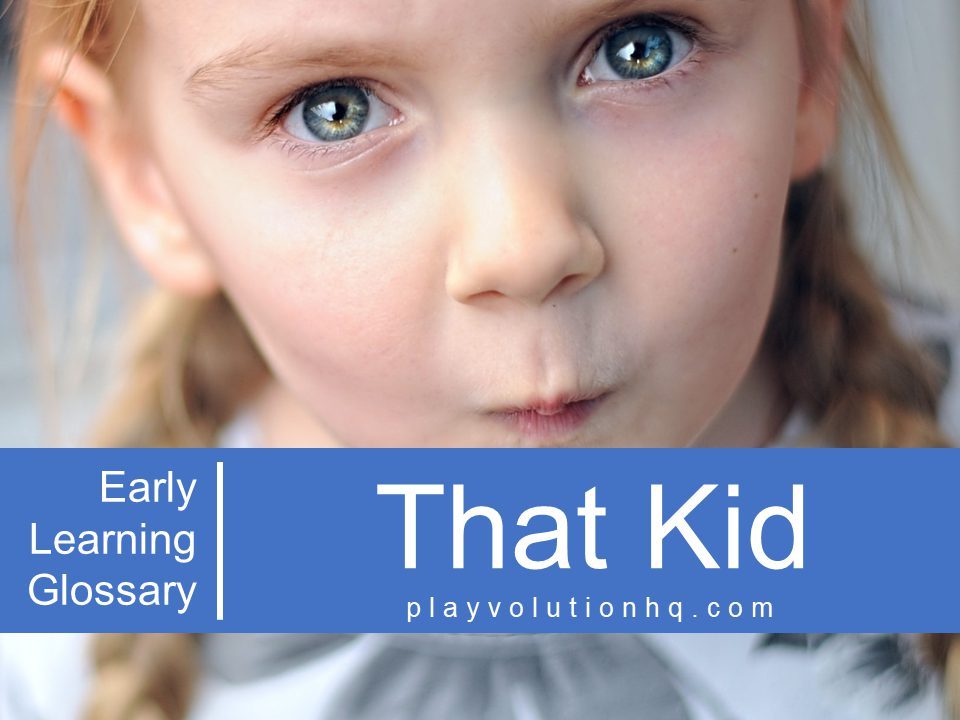
In early learning settings, That Kid is a term of art used as shorthand when referring to a challenging child. Such a child may:
- Know your buttons and how to push them
- Get under your skin for a known or unknown reason
- Scratch at your last nerve just to see your reaction–or without even knowing they’re doing it
- Demand/need/get 87.50 percent of your attention
- Question you
- Push you to your limit (physically, emotionally, and/or professionally)
- Empty your toolbox
- Require/need/want more than you may be able to provide
It should be noted that the term is often pronounced in italics, paired with the air quotes hand gesture, or sputtered in an exhausted and exasperated tone.
Full-Time And Sometimes
That Kid comes in two flavors. In some cases, kids get the label as soon as you meet them and maintain it for your entire relationship. Sometimes, kids move in and out of That Kid status. This happens during some developmental stages or behavioral challenges. Kimberly, for example, gets the label when, excited about her shiny new teeth, she decides to test them out on a months-long biting binge.
Not Necessarily A Kid
That Kid does not have to be a kid, other adults can meet the definition. The coworker you’re always philosophically butting heads with, for example. “Karl and his love of identical paper-plate-based craft projects is sucking the juice from my soul! He’s such a That Kid. I hope he develops a repetitive use injury in his wrist from pre-cutting all those identical fish lips.”
It Might Not Be Them
Cases of caregivers labeling children as That Kid due to personal bias, lack of understanding about child development, or some issue from their personal life abound. I’m embarrassed to admit it, but, for a time, I used to label boys with a certain first name as That Kid because in the past I’d worked with so many kids with the same name who were That Kids.
Toddlers who climb and throw things get the label. Active children who struggle to stay still during circle time get the label. Sometimes, kids get the label based on the color of their skin, where their parents were born, or what time they get put to bed at night.
Personal That Kid bias can be hard to see and challenging to change.
Reflection on our personal mindset and professional practice is warranted before permanently bestowing the That Kid label on a child. It’s a useful term for venting and conveying in-the-moment frustration, but affixing the label to a child for too long isn’t helpful. It doesn’t solve any problems. It’s better to seek–and implement–solutions to the underlying causes.
Contribute content to Playvolution HQ
Brought to you by Explorations Early Learning
Thoughts On This Entry?
I’d love to hear your thoughts on improving this entry and suggestions for additional glossary additions in the comments below. You can also contact me with comments or concerns.
Browse Trainings
Post Author
Jeff Johnson is an early learning trainer, podcaster, and author who founded Explorations Early Learning, Playvolution HQ, and Play Haven.



Leave a Reply